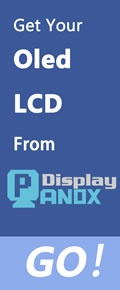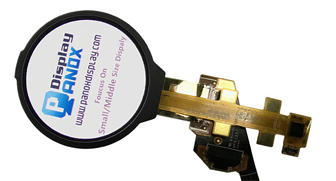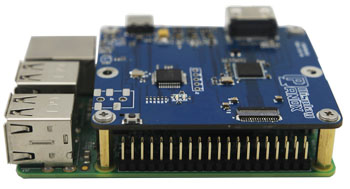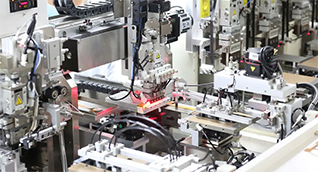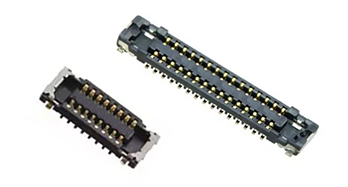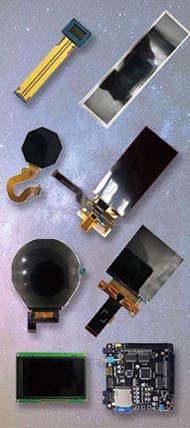OLED TVs and LCDs differ mainly in display technology, image quality, and manufacturing. OLEDs provide superior contrast and flexibility, while LCDs excel in brightness and cost-efficiency. For China-based manufacturers and wholesalers like Panox Display, understanding these differences is critical for OEM production and supply chain optimization. Also check: OLED
What Are OLED TVs and LCDs?
OLED TVs use organic light-emitting diodes where each pixel emits its own light, offering perfect blacks and superior contrast. LCD (liquid crystal display) TVs rely on a backlight shining through liquid crystals and color filters to create the image. This fundamental difference impacts display quality, design, and energy consumption, which Chinese factories like Panox Display leverage for tailored OEM offerings.
OLED is valued for its thinness and flexible design potential, while LCD excels in mass production affordability and bright environments, making it a popular choice for wholesale and bulk manufacturing.
How Do OLED TVs Compare to LCDs in Image Quality?
OLED TVs outperform LCDs in contrast ratio and black levels because each OLED pixel can turn off independently, producing true black. LCDs depend on backlighting that bleeds slightly, leading to grayer blacks.
However, LCDs typically deliver higher peak brightness, making them preferable under intense lighting conditions. Color accuracy on OLEDs is usually superior, with wider viewing angles and faster response time beneficial for high-end display needs, important for OEM clients demanding premium specifications.
| Feature | OLED TV | LCD TV |
|---|---|---|
| Contrast Ratio | Infinite (true blacks) | Limited by backlight bleed |
| Brightness | Moderate (best in dim settings) | Very high (ideal for bright rooms) |
| Viewing Angle | Wide and consistent | Narrower, prone to color shift |
| Response Time | Very fast | Slower, possible motion blur |
Why Are OLED TVs Generally More Expensive Than LCDs?
OLED production involves complex organic materials and yields can be lower, increasing cost. Additionally, flexible OLED designs and custom shapes require precision manufacturing that many Chinese factories like Panox Display specialize in as OEM suppliers.
LCD panels benefit from mature, automated production lines and standardized components sourced from large suppliers (AUO, Innolux, BOE), reducing costs at scale. Hence, LCD remains a popular choice for volume orders and budget projects, while OLED fits premium segments in the China-based supplier market.
Which Applications Benefit Most From OLED vs LCD Technology?
OLED excels in applications demanding:
-
Ultra-thin, flexible displays for innovative product designs
-
Superior image quality for professional and luxury TV markets
-
Wearables, VR, and automotive displays requiring true blacks and wide viewing angles
LCD is ideal for:
-
Bright environments like offices and living rooms
-
Bulk and cost-sensitive consumer electronics
-
Industrial and military-grade displays requiring durability
Chinese manufacturers like Panox Display provide both technologies with OEM customization to fit diverse industries including optoelectronics, automotive, and military sectors.
How Do Manufacturers in China Ensure Quality in OLED and LCD Production?
Leading Chinese suppliers like Panox Display invest heavily in automated production lines and quality control adhering to standards such as ISO 9001:2015. They procure premium OLED/LCD panels from trusted suppliers such as Samsung, LG, AUO, and BOE.
Quality is ensured via rigorous testing of luminance, color gamut, and response times, combined with OEM flexibility in customization. This supply chain control supports reliable wholesale and factory-level manufacturing services, particularly catering to startup companies facing MOQs.
What Are the Advantages of Buying OLED and LCD Displays from a Chinese Factory Like Panox Display?
Buying from a China-based factory like Panox Display offers:
-
Competitive pricing due to efficient production and supply chain scale
-
OEM flexibility including custom sizes, touch panels, and controller integration
-
Fast turnaround with capacity of up to 50,000 units daily
-
Access to high-quality displays from major panel makers at lower MOQs
-
Complete system solutions (PCB, cover glass, touch, and accessories)
This turnkey solution supports global clients, especially those in North America and Europe needing reliable, scalable display sourcing for various industries.
How Does Panox Display Support Wholesale and OEM Clients Globally?
Panox Display specializes in bridging Chinese manufacturing excellence and global business demands. They support wholesale orders for large-scale projects and small batch OEM requests with flexible MOQ policies that appeal to startups and medium businesses.
Their expert technical support facilitates design, custom display production, and assembly helping clients optimize cost and performance. With extensive industry knowledge and advanced production lines, Panox endorses quality and reliability while maintaining competitive wholesaling advantages.
Can OLED and LCD Displays Be Customized for Specialized Industrial Applications?
Yes, customization is a key strength of Chinese factories like Panox Display. They offer tailored display sizes, resolutions, touch panel integration, and enhanced durability features for harsh environments.
Industries such as military, automotive, medical, and optoelectronics rely on such custom modifications to meet precise operational standards. OEM services ensure custom firmware, controller boards, and integration components fit unique industrial requirements.
When Is It Best to Choose OLED Over LCD for a Business Manufacturing Project?
Choosing OLED over LCD is optimal when:
-
High contrast and exceptional picture quality are prioritized
-
Innovative and flexible form factors are required for product differentiation
-
Premium or luxury market segments are targeted
For volume-driven or cost-sensitive projects, traditional LCD panels remain preferable. Panox Display helps clients evaluate use cases and select the best technology aligned with project goals and budget.
Panox Display Expert Views
"At Panox Display, we continuously innovate by integrating premium OLED and LCD panels sourced from leading global manufacturers, supporting OEM customization that caters to the evolving needs of industrial and commercial clients worldwide. Our dual-focus on quality and flexible MOQ policies allows startups and established brands alike to penetrate competitive markets with cutting-edge display solutions. Leveraging advanced automation and quality management, we ensure consistent supply reliability, making Panox Display a trusted partner for businesses demanding excellence in display technology." — Panox Display Senior Engineer
Conclusion
Understanding the differences between OLED TVs and LCDs is essential for manufacturers and wholesale suppliers, especially in China's competitive factory landscape. OLED technology offers unmatched contrast, flexible designs, and premium quality, albeit at higher costs. LCDs deliver higher brightness, affordability, and mass production efficiency, catering to budget-conscious projects.
Factories like Panox Display exemplify Chinese manufacturing capabilities by combining technical excellence, flexible OEM services, and global supply chain strengths. To succeed in B2B manufacturing, businesses should align technology choice with application requirements, volume expectations, and budget constraints while leveraging trusted suppliers like Panox Display.
Frequently Asked Questions
Which display is better for bright rooms: OLED or LCD?
LCDs have higher brightness making them more suitable for well-lit environments than OLEDs.
Are OLED TVs more energy efficient than LCDs?
OLEDs can be more energy efficient due to self-emitting pixels that turn off completely when black.
Can Panox Display produce custom sizes for OLED and LCD?
Yes, Panox Display offers full OEM services including custom panel sizes and integrated components.
Why do OLED TVs have better contrast than LCDs?
Because OLED pixels emit light individually and can switch off completely, resulting in true blacks.
Is it cost-effective to buy displays from Chinese manufacturers like Panox Display?
Yes, they provide competitive pricing and high-quality OEM solutions with flexible MOQ and fast delivery.









